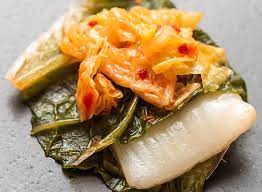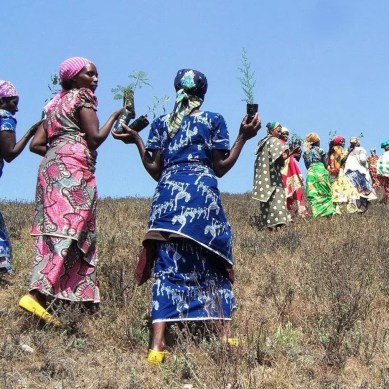
As lab-cultured fish becomes an alternative source of seafood, production has also been changing to ensure safety. Researchers initially grow the cells in a single layer adhering to the surface of small flasks or other labware. The cells grow in nutrient-rich media typically consisting of a unique, species-specific combination of glucose, amino acids, peptides, fatty acids, vitamins, salts and growth factors such as hormones, recombinant proteins and cytokines.
Many researchers in the industry initially used components from bovine serum in their growth media, but most are experimenting with alternatives.
The next step is to scale up to produce enough biomass to eat and this can prove challenging. Scientists must coax the cells to grow in higher volume, three-dimensional bioreactors, in which cells are suspended in their growth environment.
Once this is accomplished, researchers gradually scale up the operation to larger and larger bioreactors. The cellular meat produced in these bioreactors comes out soft, like minced meat. If researchers want to give the meat the texture of a fillet, they must coax the cells to combine and grow on edible scaffolds.
Each step of the process presents its own set of challenges. Developing cell lines, for example, can consume years of a company’s early R&D budget, says Jennifer Lamy, who leads the Good Food Institute’s alternative seafood efforts.
Berlin-based Bluu Biosciences benefits in this area from the foundational research of its co-founder, Sebastian Rakers. The marine biologist had previously established more than 80 different cell lines from more than 20 different marine species during his 12 years with the Fraunhofer Society.
In May 2020, Rakers helped launch Bluu, which is focusing on common carp, Atlantic salmon and rainbow trout. The first products will be unstructured, scaffold-free meat prepared in balls, which are common in Asian cuisines.
Fish cells comprise half the product, while plant-based proteins and a small percentage of non-plant-based proteins make up the other half. The company has not yet held tastings of its products.
For Wildtype, a company developing sushi-grade salmon, it took three years to establish cell lines to the point where they could be grown in suspension in bioreactors, says co-founder Aryé Elfenbein. In moving from glass plates to a bioreactor, Wildtype scientists initially used microcarriers, which are beads that provide a place for cells to attach in suspended cell culture, to help increase their viability. From there the company transitioned to growing the cells in clusters, and finally to single-cell suspension.
Visitors to Wildtype’s tasting room can watch how their food is being made through a glass door – an idea unheard of in the conventional meat industry. “Can you imagine a tasting room next to a slaughterhouse?” Elfenbein asks.
Some people object to the idea of their meat being grown in a lab, but Wildtype’s founders say that more awareness about slaughter is changing that. “A lot of people have intentionally turned a blind eye to how our meat and seafood is made because we all know it’s not a great story,” says Justin Kolbeck, who co-founded the company with Elfenbein.
“Slaughterhouse conditions are notoriously unpleasant for both workers and animals, and aquaculture operations are not much better,” he says. “However, I think there’s been a big shift in terms of people wanting to know more and having more visibility and transparency into what they’re eating.”
To make sushi-grade salmon, Wildtype must use scaffolds, which the company is developing in-house using plant-derived ingredients. Scaffolds are tricky because they must promote cell growth, ensure thermal stability and also provide the right texture to the human palate.
“The process of cell–scaffold integration at a very large scale is something that just doesn’t exist today,” says Elfenbein. Wildtype’s scientists spent several years screening thousands of scaffold candidates with these attributes. When they found ones that were also low-cost, plant-based, widely available and currently in use in the US food supply, they developed a high-throughput method to produce them.
Like all companies in the cultured meat industry, Wildtype faces the formidable challenge of scaling up in an economically viable way. In fact, Wildtype has never made more than a few pounds of salmon sushi at a time.
That’s because scaling up isn’t a simple matter of multiplying each component by a factor. Operating on a larger scale requires different equipment and management of a different set of heat and gas transfer rates, pH control, nutrient and oxygen supply, and raw material impurities.
“On a larger scale, controlling the environment isn’t as easy, and sometimes the cells don’t show the same properties as when they were at the smaller scale,” says Ovissipour. “So, you are dealing with a completely different setup which requires more optimization and modelling,” he says.
No matter what the scale of the operation, the cost of producing cultured meat is astronomically high compared with that of conventional meat – over $20,000 per kilogramme at the high-end, by one estimate prepared by consulting firm CE Delft for the Good Food Institute. That won’t change without a tremendous amount of R&D and an approach to cell culture that differs radically from the way scientists have been growing cells for the past 70 years.
“The entire biopharma industry has been built on harvesting the proteins that cells produce and discarding the cells,” says Kolbeck. The production of monoclonal antibodies is one example of that.
“In our system the inverse is true: [We want to learn] how to concentrate large quantities of cells while keeping them viable for their onward journey to a scaffold.”
- A Nature report











